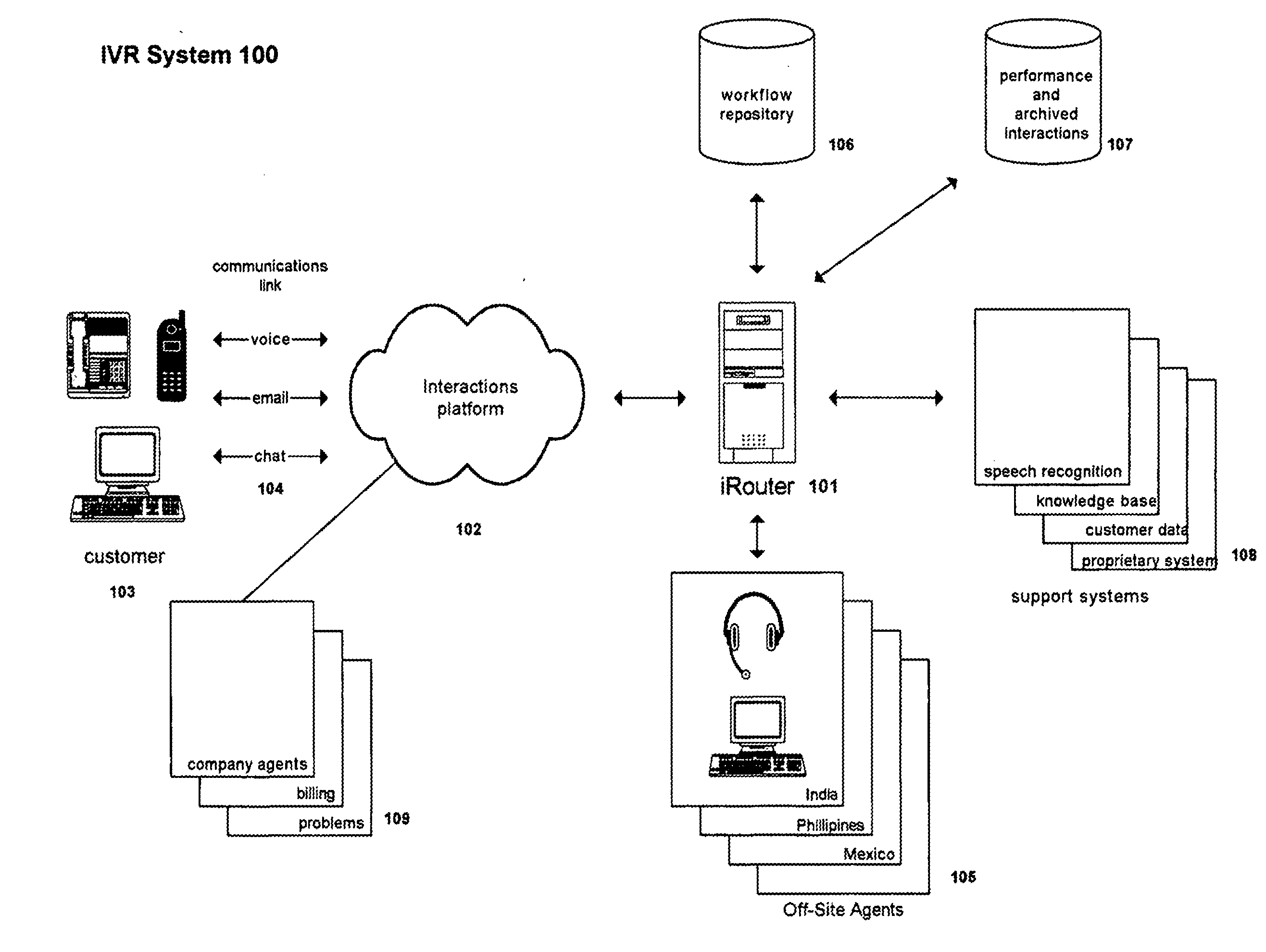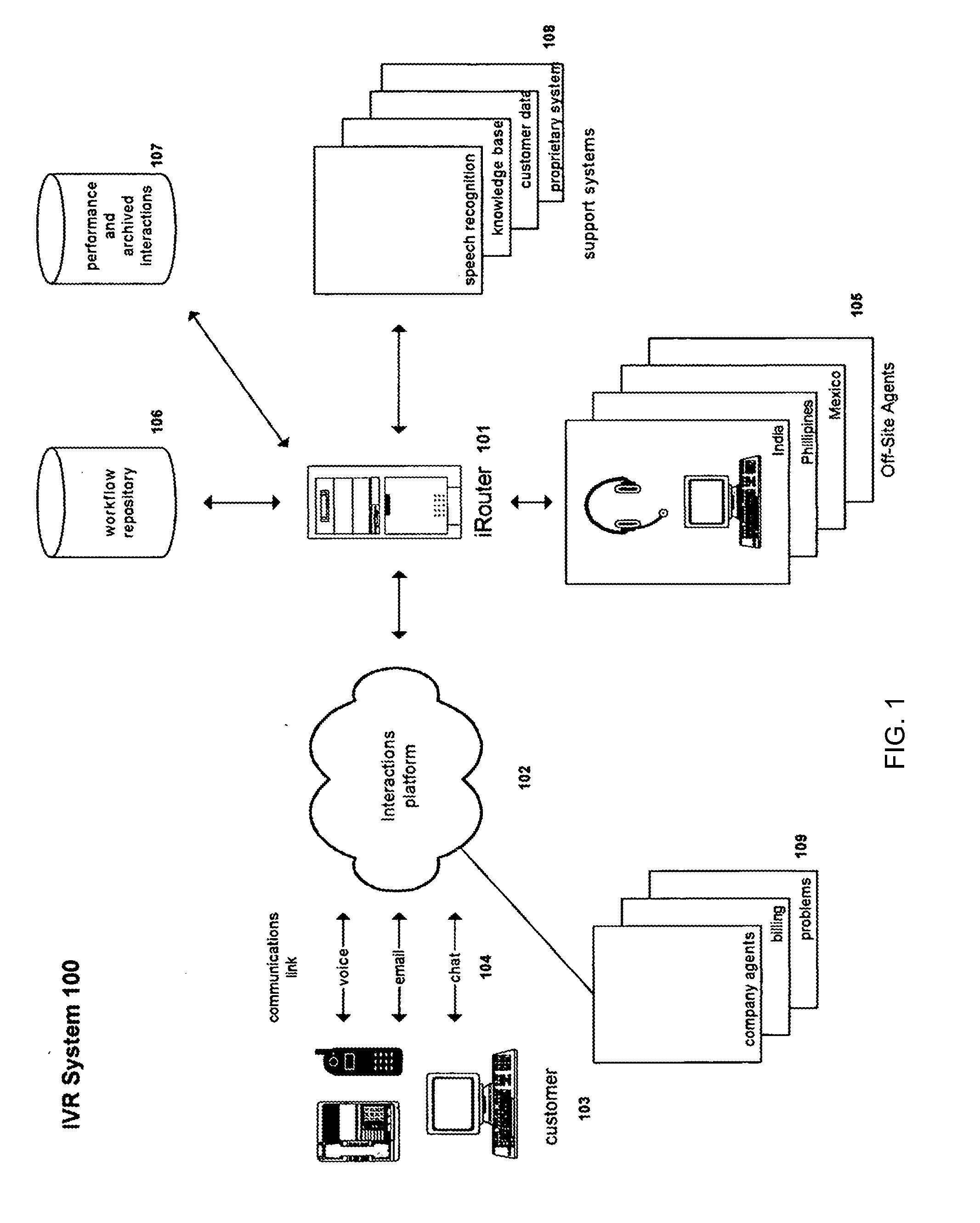Automated Speech Recognition Proxy System for Natural Language Understanding
a natural language understanding and automatic recognition technology, applied in the field of interactive response communication systems, can solve the problems of large amount, inconsistent or downright frustrating, and provide less than satisfactory customer experience, so as to facilitate natural language understanding, relieve the burden on hsr subsystems, and improve the overall capability of voice user interfaces
- Summary
- Abstract
- Description
- Claims
- Application Information
AI Technical Summary
Benefits of technology
Problems solved by technology
Method used
Image
Examples
Embodiment Construction
[0059]Description of operation of an interactive response system, and of related machine learning systems and processes, is provided first, according to FIGS. 1-10. Description of operation of an ASR proxy system and processes related thereto are described thereafter, according to FIGS. 11-16. FIGS. 17-24 and the corresponding discussion generally relate to the process of optimizing the ASR proxy, with the goal of optimizing the combination of automation of computer recognition and human-assisted recognition, while at the same time improving the user experience. Note that unless otherwise evident, the terms “intent” and “meaning” used herein refer to the contextual reason corresponding to an utterance (for instance, having a system determine a caller's business intent to make a new flight reservation). In contrast, the term “recognize” and its derivatives is generally used herein for the process of converting a sound to its corresponding word.
[0060]A Human Assisted Decision Engine i...
PUM
 Login to View More
Login to View More Abstract
Description
Claims
Application Information
 Login to View More
Login to View More - R&D
- Intellectual Property
- Life Sciences
- Materials
- Tech Scout
- Unparalleled Data Quality
- Higher Quality Content
- 60% Fewer Hallucinations
Browse by: Latest US Patents, China's latest patents, Technical Efficacy Thesaurus, Application Domain, Technology Topic, Popular Technical Reports.
© 2025 PatSnap. All rights reserved.Legal|Privacy policy|Modern Slavery Act Transparency Statement|Sitemap|About US| Contact US: help@patsnap.com



